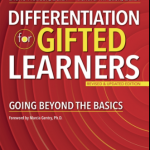Narcissistic, sociopathic, obsessive compulsive, oppositional defiant, bipolar, passive aggressive, depression, and anxiety. That could be my characterization of this year’s presidential candidates and my state of mind when I think about it. But not quite.
Rather, I’m referring to mental health conditions from which some of my students most surely suffer. And I have essentially zero training in how to recognize these conditions. Nor can I tell when a student’s behavior indicates either an underlying mental health condition that should be referred to the psychologist or adolescent goofiness that I should be able to manage as a teacher. And perhaps most dangerous: I don’t know how to adapt my teaching so as to mediate and not aggravate underlying conditions or associated behavior. And I’m willing to wager that I’m not alone in my ignorance.
But I know of no professional development in which teachers can participate that addresses these deficiencies. So, to get where we need to be, teachers need to study up on our own – Like my colleague did when faced with a student whose defiance was out of her experience. She didn’t want to keep referring him, but nothing she was doing seemed to have any impact. So she went online and as best as she could tell, his behavior aligns with oppositional defiant disorder. The reports she read recommended key phrases to use when she talked to the student that might lead him to be more compliant. So she tried them and he has distinguished much of his defiance.
Since she told me that story, I’ve been reading up on passive aggression to gain insight into a student of mine. Without sharing too much I’d say that I’m seeing him with different eyes. Where before I considered his behavior as something I had to punish and call home about, I now see it as a challenge I can manage with mindful interventions.
Neither my colleague nor I would claim to be remotely qualified to diagnose our students’ mental health conditions. But with a little bit of investigation we both learned some tools to make our relationships with students more productive. That makes me realize how much gain there is to have if, in the absence of formal professional development, teachers included learning about adolescent mental health topics in our professional reading. Moreover, to the extent that we decide the direction of our professional learning communities, we should make sure to include some time to learn about teaching students who display mental health disorders.
I’m going to start my own investigations by studying the Children’s Mental Health Disorder Fact Sheet for the Classroom. Then I’ll read Common Psychosocial Problems of School Aged Youth: Developmental Variations, Problems, Disorders and Perspectives for Prevention and Treatment and Teaching Students with Mental Health Disorders. When school starts in the fall I’ll share the infographic: Mental Health Facts, Children and teens and try to encourage PLCs in my school to learn more.
Finally, please help me by sharing any resources you have on the topic of adolescent mental health. Thanks in advance.









Comments 2
Sandy-
Thank you so much for sharing this piece. Just this past week I was meeting with our team and we just sat in dismay trying to figure out how to support our unique and amazing students who suffer from mental health disorders. I will gladly share resources and materials we uncover – but for now THANK YOU!
Sandy, you stated, “I don’t know how to adapt my teaching so as to mediate and not aggravate underlying conditions or associated behavior. And I’m willing to wager that I’m not alone in my ignorance.” YOU ARE NOT ALONE! My colleagues and I were just lamenting that we do not know how to help some of our students with mental health issues, let alone how to not set them off in class. It has been this way since we lost our school counselor many years ago. She used to help us out in this are but now it falls to the individual teacher, team or PLC. Thanks for listing those books – they will be on my reading list!